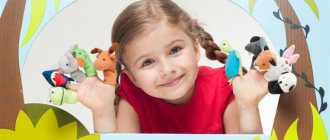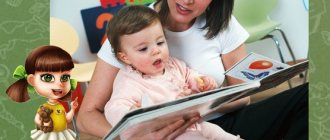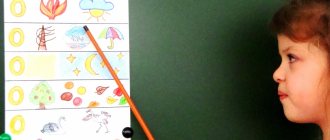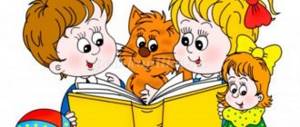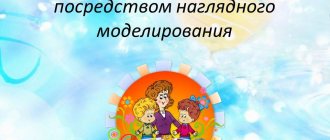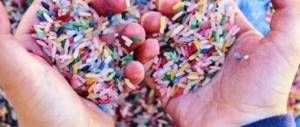Master class “Application of quest technology in the educational process of preschool educational institutions”
Goal: to provide practical assistance to teachers in using quest technology in the context of the implementation of the Federal State Educational Standard for Educational Education.
Tasks:
1. To form among the participants of the master class ideas about quest technology in a preschool educational institution.
2. To promote the practical development of skills in designing educational activities using quest technology.
The course of the master class.
Dear colleagues!
Today I will show you in practice that educational activities in the quest format fit perfectly into the concept set by the Federal State Educational Standard for preschool education. This is an excellent opportunity for teachers and children to organize life in kindergarten in a fun and original way.
What is quest technology? A quest is a game-based pedagogical technology that promotes the formation of solutions to certain problems based on a competent choice of alternative options through the implementation of a specific plot.
The word itself comes from the English Quest (search, subject of search, search for adventure) - this is a type of plot: literary, computer, game, in which the journey to the intended goal goes through overcoming a number of difficulties.
During the quest game, children develop in all educational areas, and different types of activities are implemented.
- Gaming.
- Communicative.
- Cognitive and research.
- Motor.
- Fine.
- Musical.
- Perception of fiction and folklore.
— To understand how this technology works, I invite you to go through a fragment of the quest game “Bring the Forest to Life” with me.
— I ask the focus group to help me with this.
The focus group is located next to the panel, which depicts: sky, sun, grass, trees.
— The forest is the lungs of our planet. The type of air we breathe largely depends on its volume and condition.
— Let’s take a breath of forest air (inhale and exhale).
- Amazing!
— You probably already guessed that the goal of our quest-game will be to revive the forest.
— What do you mean by “Revitalize the forest”?
Focus group: - Populate it with forest inhabitants.
- Agree!
— Our game will be of a search and research nature. You and I will need to find the inhabitants of the forest.
- Attention to the screen! Here is a route diagram that will serve as a guide for us, i.e. along it we must move from point to point, passing levels.
Also, to conduct this game, we could use maps, route sheets, envelopes with tasks, notes, and others as guidelines.
— Let’s consider the first level of the game, which will also be the first point of completing the task (the focus group looks at the route diagram on the screen).
— What should we call this point?
Focus group: — “Flower meadow.”
- Let's find this clearing in our space.
The focus group approaches the clearing, takes a flower on which the task is written: “Choose insects from the proposed inhabitants of the forest.” They select, a red signal lights up on the screen, i.e. the task was completed correctly. The focus group takes insects from the clearing with them for further travel through the forest.
- Amazing! Level one completed! Let's take a closer look at the diagram, where are we moving next?
Focus group: - To the second point, which is ahead. We'll call it "Forest".
The focus group goes to the trees, the task is written on a birch leaf: “Identify animal tracks and find them using them.”
— Dear colleagues, you can complicate the transition from one level to another with tasks, apply orientation in space, determine the number of steps, and fix the names of trees.
The focus group determines the tracks: - These are bear, hare and fox tracks (they follow the tracks behind the trees and find the animals).
Enriching children's vocabulary with adjectives.
— Colleagues, when working with children at this stage, you can offer children additional tasks, questions, and conduct a conversation in order to generalize and systematize knowledge about wild animals.
- Attention to the screen! The red signal has come on! What does this mean?
Focus group: - This means that we completed the task and completed another level of the game.
The focus group takes forest animals with them for further travel through the forest.
- Let's move on. And we just have to find the third point. What does the diagram tell us?
The focus group group points to a square on the route map.
- At this stage, with the help of auxiliary questions, we need to activate children for reasoning and logical thinking. These questions are: How did you determine? What do you think? Why did you decide so?
“And I’ll ask you a question: Who are we going to look for?”
Focus group: - We will look for birds.
- Why did you decide so?
Focus group: - We decided this because the diagram shows a cell.
- Tell me, should birds live in a cage?
Focus group: - Of course not, they should fly free.
“Then let’s go save the birds.”
The focus group finds a cage in space, near it there are feathers with riddles glued to them.
- Tell me, can you determine which bird’s feather this is?
Focus group answers, when guessing, the bird is released into the wild.
— Colleagues, if a child finds it difficult to answer, you can give him a hint in the form of a riddle.
— Our diagram showed us a signal that we had successfully completed the level! Well done! But the goal of the game has not yet been achieved. Remind me of her?
Focus group: - We need to revive the forest.
- How can we do this?
Focus group: - Populate the forest with found animals, insects and birds.
— Tell me, can children make mistakes in placing the inhabitants of the forest?
Focus group: - No, they can’t. The guys will accurately place it, since the panel provides individual fixation for each type.
In this case:
- for insects - adhesive tape;
- for animals - button;
- for birds - a button.
The focus group pins the forest inhabitants on the panel.
- So, our goal has been achieved! We brought the forest to life!
(The sounds of the forest are heard.)
— Colleagues, thank you for participating in the master class. You can take your seats.
— I would like to note that when creating a quest game, I set one goal for children. And for myself, as a teacher, for the development of each child, I set a number of pedagogical tasks, which I solve in the course of such joint activities.
— I hope that I have convinced you that quest technology provides invaluable assistance to the teacher, providing an opportunity to diversify the educational process, to make it unusual, memorable, exciting, fun and playful.
Thank you for your attention!
.
Quest technology in preschool education
Kozhina Yu.V., Kirchenko N.P. Quest technology in preschool education // Sovushka. 2020. N1(11). URL: https://kssovushka.ru/zhurnal/11/ (date of access: 10.10.2020).
Order No. 50470
One of the tasks of the Federal State Educational Standard for Education is to create favorable conditions for the development of children in accordance with their age and individual characteristics and inclinations, the development of the abilities and creative potential of each child as a subject of relationships with himself, other children, adults and the world.
Currently, teaching teams of preschool educational institutions are actively introducing innovative technologies into their work aimed at implementing the state standard of preschool education.
One such technology is gaming technology.
Interest in it is associated with the recognition of the role and possibilities of children's play in solving the problems of comprehensive development and education of children at the stage of preschool childhood. Play for a child is the most attractive, natural form and means of learning about the world, their capabilities, self-expression and self-development.
Among the gaming technologies widely used in the practice of educating preschool children, one can highlight quest technology, which is only just beginning to be used by teachers.
The main advantage of the quest is that this form of organizing educational activities unobtrusively, in a playful, entertaining way helps to activate the cognitive and thought processes of the participants.
The English word quest itself can be interpreted as “search” or even “adventure”. Quest technologies in education and upbringing of children began to be widely used in 1995, when Bernie Dodge, a professor at the University of San Diego, proposed using a certain search system in the learning process, in which it was supposed to find a solution to a given problem with the passage of intermediate stages, at each of which it was necessary to complete some action or find the key to reach the next level.
“Quest game” is a team game in which players need to search for various objects, find a use for them, talk with various characters in the game, solve puzzles, etc., which is an effective means of increasing both motor activity and motivational readiness to knowledge and research.
This game can be played both indoors, or in a group of premises (moving from the group to the music or sports hall, swimming pool and other premises of the kindergarten), and outdoors.
Quests are tasked with implementing project and game activities, introducing new information, consolidating existing knowledge, and practicing children’s skills.
During the journey, children independently overcome obstacles to achieve their goals, develop team spirit, perseverance, and a friendly attitude towards each other, because only the team that has completed the task correctly can continue further.
In quest games there is also a process of integration. It represents the unification into a single whole of previously disparate components of the system on the basis of interdependence and complementarity and allows players to unobtrusively involve players in a variety of children's activities in a short time.
Quest, as a universal gaming technology, includes competitive mechanisms in the child, which also creates conditions for more active involvement in the game, to improve the quality of completing tasks and achieving results. After each game, the child analyzes his place in the team, team actions, plans and predicts the result of further games together with the teacher-mentor.
Those. Quest games are one of the interesting means aimed at self-education and self-development of a child as a creative, physically healthy individual, with an active cognitive position, which is the main requirement of the Federal State Educational Standard for Education.
The staff of our kindergarten works in the priority direction “Ecological education of preschool children” and is constantly searching for new forms of activities that allow us to expand our understanding of nature, and most importantly, the ecological culture of modern man. Therefore, this academic year we used a new form of organizing pedagogical activities - quest games on environmental topics.
We played the first travel game with children from older groups called “Visiting Autumn.” Group rooms and areas on the territory of the kindergarten were chosen as the territory for this game.
The tasks of the autumn quest game were:
- Consolidate knowledge about vegetables, fruits, berries, cereals, trees and shrubs.
- To form the cognitive activity of children.
- Reinforce the rules of behavior in nature.
- Increase physical activity.
- Foster a caring attitude towards nature and the environment.
- Skill to work in team.
The experience turned out to be very successful and educational.
In the process of preparing for the winter environmental quest, teachers from preparatory groups, specialized specialists and kindergarten staff joined us, since in this game they paid more attention to the basics of children’s safety and vital activity. We decided to expand the territory of the winter quest game, and the children completed tasks in all areas of the kindergarten: group rooms, medical office, winter garden, music and sports halls.
And now we present for you a photo report of the game. The name of the game is “In the footsteps of Baba Yaga.”
This quest had the following tasks:
- Expand children's understanding of the winter life of nature.
- To form the cognitive activity of pupils.
- Involve children in caring for wintering animals and birds to protect and protect nature.
- Increase the physical activity of preschool children using the multifunctionality of ice sculptures.
- Establish rules for safe behavior in winter.
In the group room, the guys were met by the Snowman, who told about his problem and asked the guys for the missing snowballs. And as expected, the guys got acquainted with the travel map (photo).
The children completed the first task in the medical office (photo), where they answered questions from the head nurse, conducted experiments with snow, and found out the causes of winter diseases. The guys got their first snowballs.
Next, the children identified the following point on the map: “Winter Garden” (photo). The task was to divide the species of birds into wintering and migratory; games were played to develop logic, thinking and attention “Feeding Trough”, “Find the Differences”. For the correct completion of all tasks, the children again received snowballs.
The next point of stay for the children was the music room (photo), where a music worker in the character of Winter conducted psycho-gymnastics “Bunnies” with the children and where the children took part in the theatrical performance “Wind and Snowflakes”. Zimushka rewarded everyone with snowballs.
Then the guys went to the gym (photo), where Vanya Zateikin met them. After playing with Vanya, the guys and Snowman came to a conclusion about his incorrect behavior in games in the winter season (photo) and gave the necessary advice to help him follow the rules of behavior on the street in winter. For their help, Vanya gave the children the last snowballs. The result of the entire quest game was the fun and playful game “Snowballs” (photo). Having complicated a number of tasks, the quest was also carried out with children from the school preparatory group.
We are now developing a spring quest, which we plan to conduct both in the kindergarten premises and in the areas and actively involve parents in it.
